VTOL Drone CFD Simulation, ANSYS Fluent Training
$100.00 Student Discount
- The problem numerically simulates a VTOL UAV using ANSYS Fluent software.
- We design the 3-D model with the Design Modeler software.
- We mesh the model with Fluent Meshing software. The element number equals 1,761,160 and their type is polyhedra.
- Multiple Reference Frames (MRF) are used to model the rotational motion of propellers.
To Order Your Project or benefit from a CFD consultation, contact our experts via email ([email protected]), online support tab, or WhatsApp at +44 7443 197273.
There are some Free Products to check our service quality.
If you want the training video in another language instead of English, ask it via [email protected] after you buy the product.
Description
VTOL UAV Aerodynamic CFD Simulation, ANSYS Fluent Training
Introduction
Unmanned aerial vehicle (UAV for short) is a term that, in terms of what it signifies, is quite similar to that of a drone. Therefore, a UAV is essentially anything that can fly in the air but is unmanned in the sense that it doesn’t have an internal pilot operating it.
A VTOL is a UAV that uses rotors to enable vertical takeoff, hovering, and landing, much like a helicopter. All multi-copter drones and some hybrid fixed-wing aircraft fall under this category.
In this simulation, a VTOL UAV with four propellers rotating around the vertical axis and one rotating around the horizontal axis is modeled using ANSYS Fluent software. The device is moving upward at a speed of 20 m/s.
The geometry of the present model is three-dimensional and has been designed using Design Modeler software. We do the meshing of the present model with Fluent Meshing software. The mesh type is Polyhedra, and the element number is 1,761,160.
Methodology: VTOL UAV CFD Simulation
Multiple Reference Frames (MRF) are used to model the rotational motion of the propellers.
Conclusion
After the simulation process was finished, contours and vectors for parameters such as velocity and pressure were obtained. As shown in the velocity contours, the velocity has decreased downside of the VTOL. While it is maximum over the nose and behind the UAV.
In the static pressure parameter case, as it was predictable, the UAV’s upper side endured the highest pressure. The maximum static pressure is applied to the propellers’ edges, which tells us about the necessity of the manufacturing focus on this component.
The force exerted in the vertical direction to the UAV is 124.94788N.
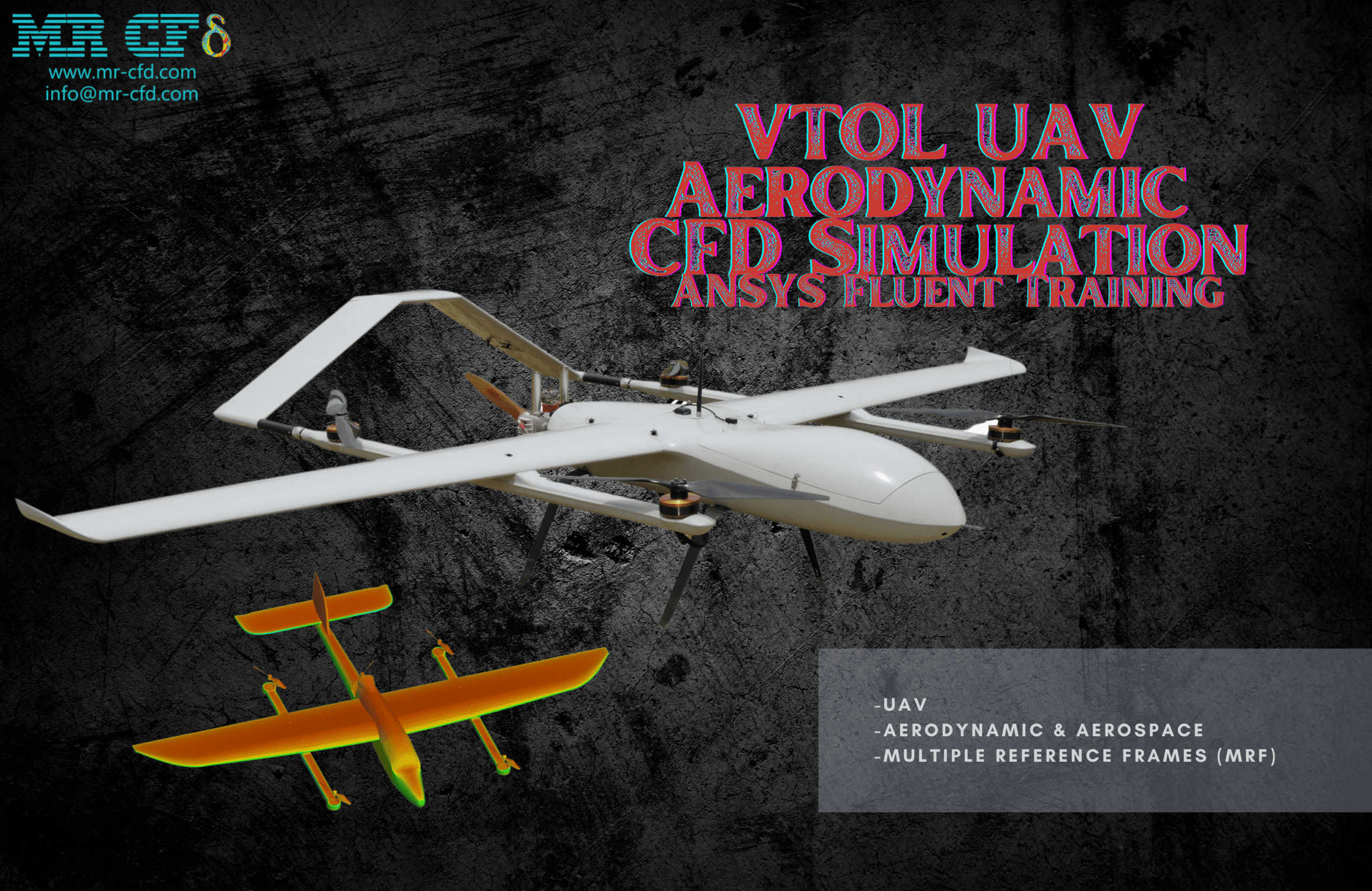
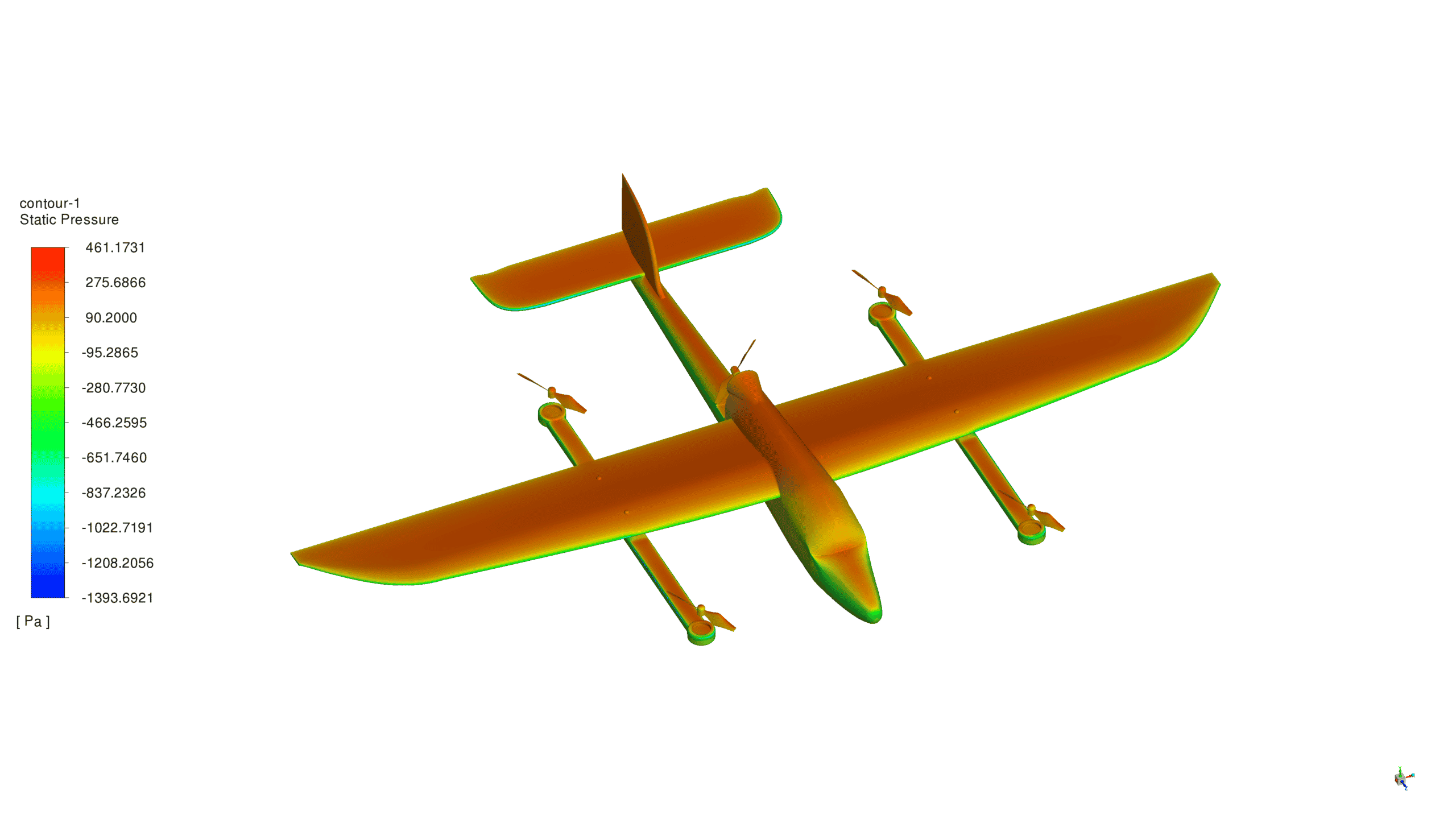
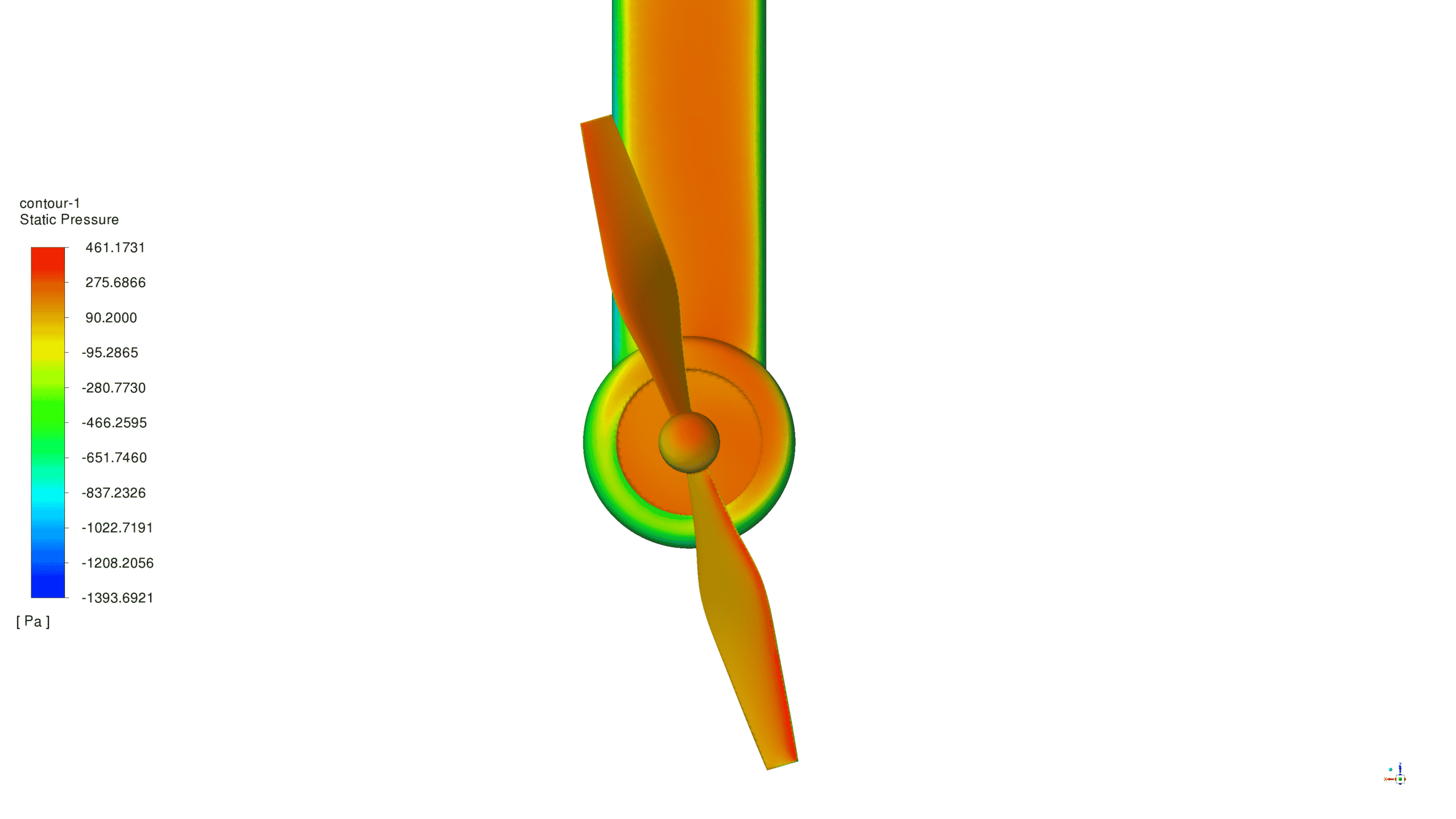
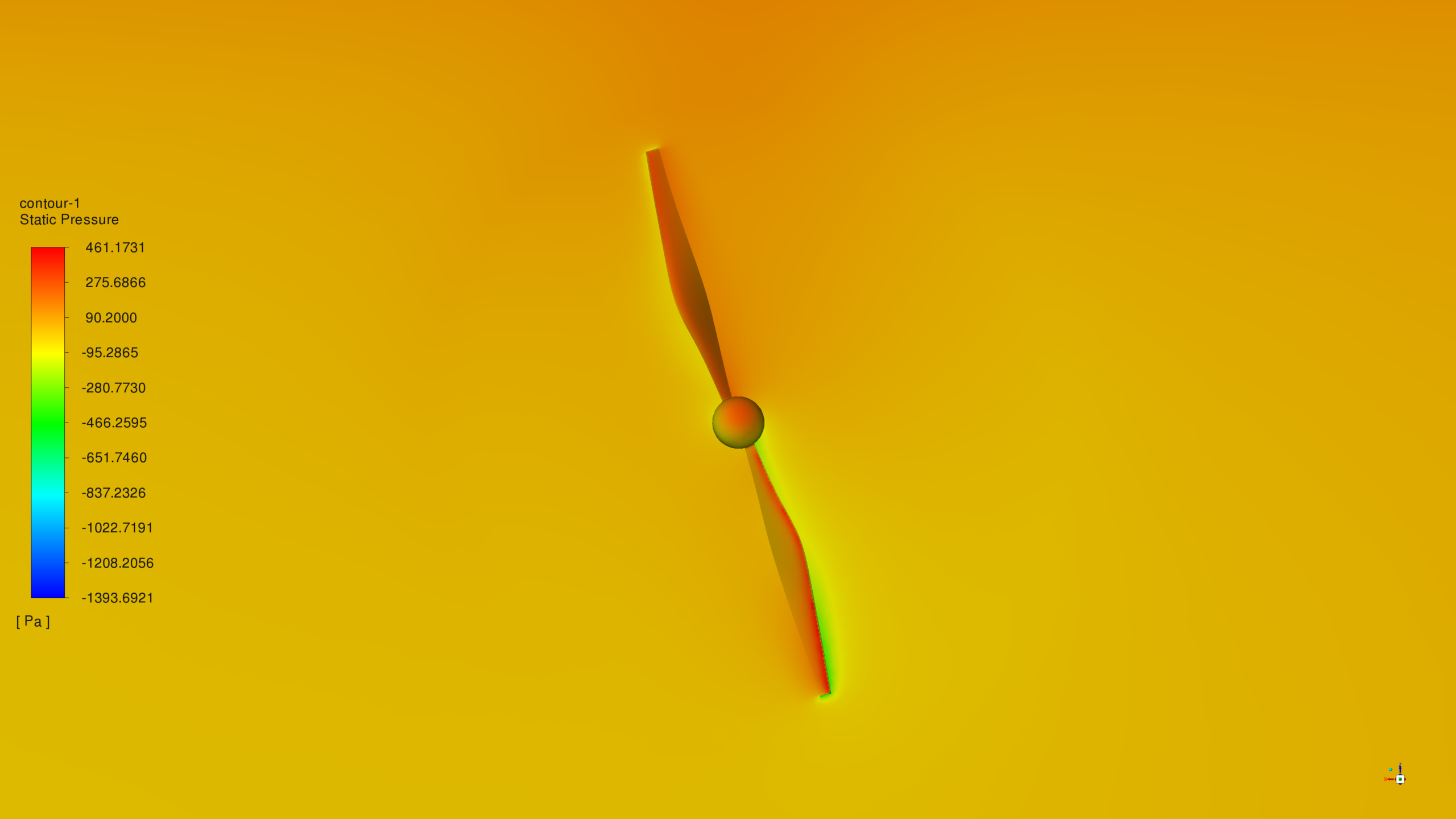
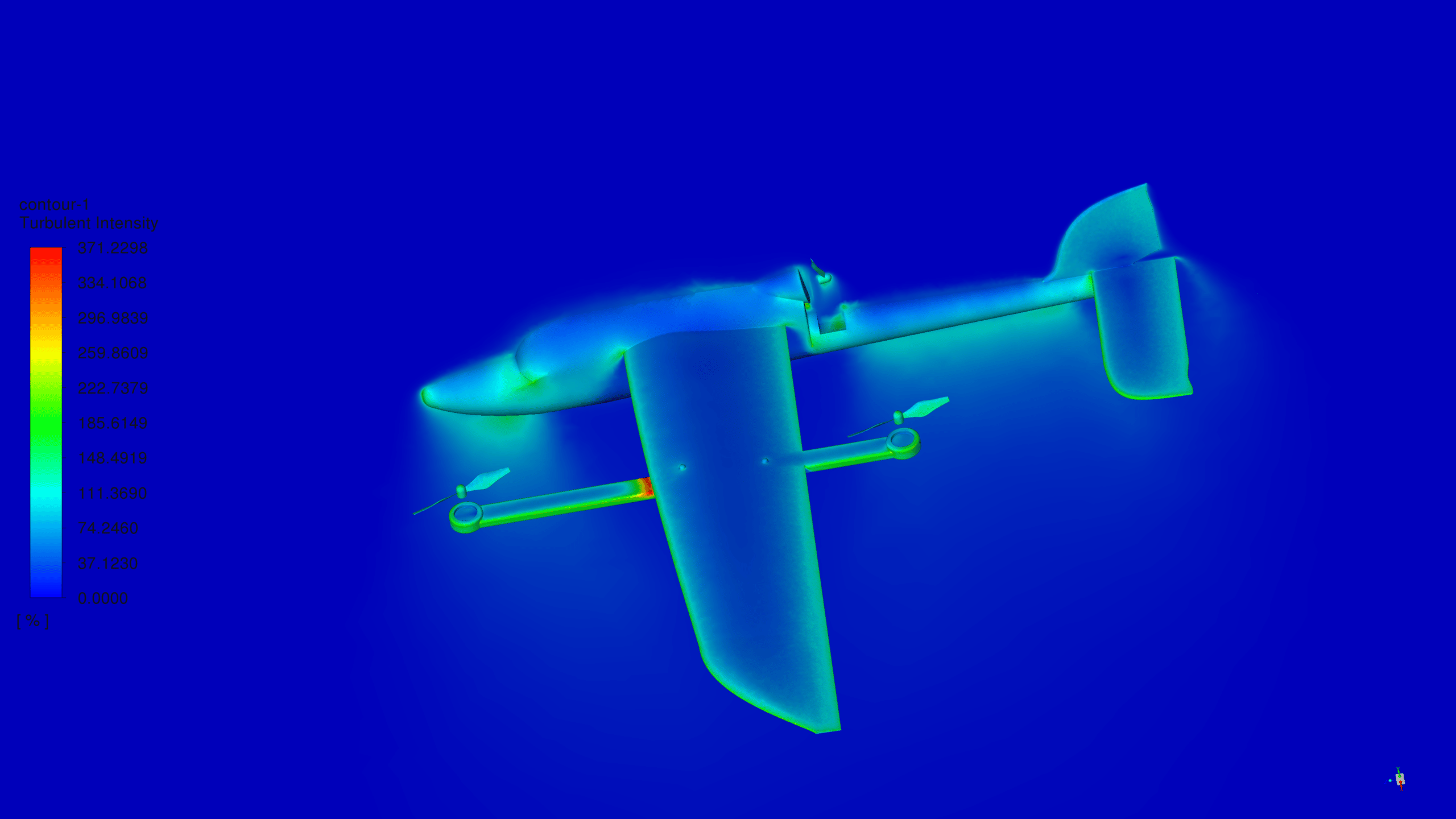
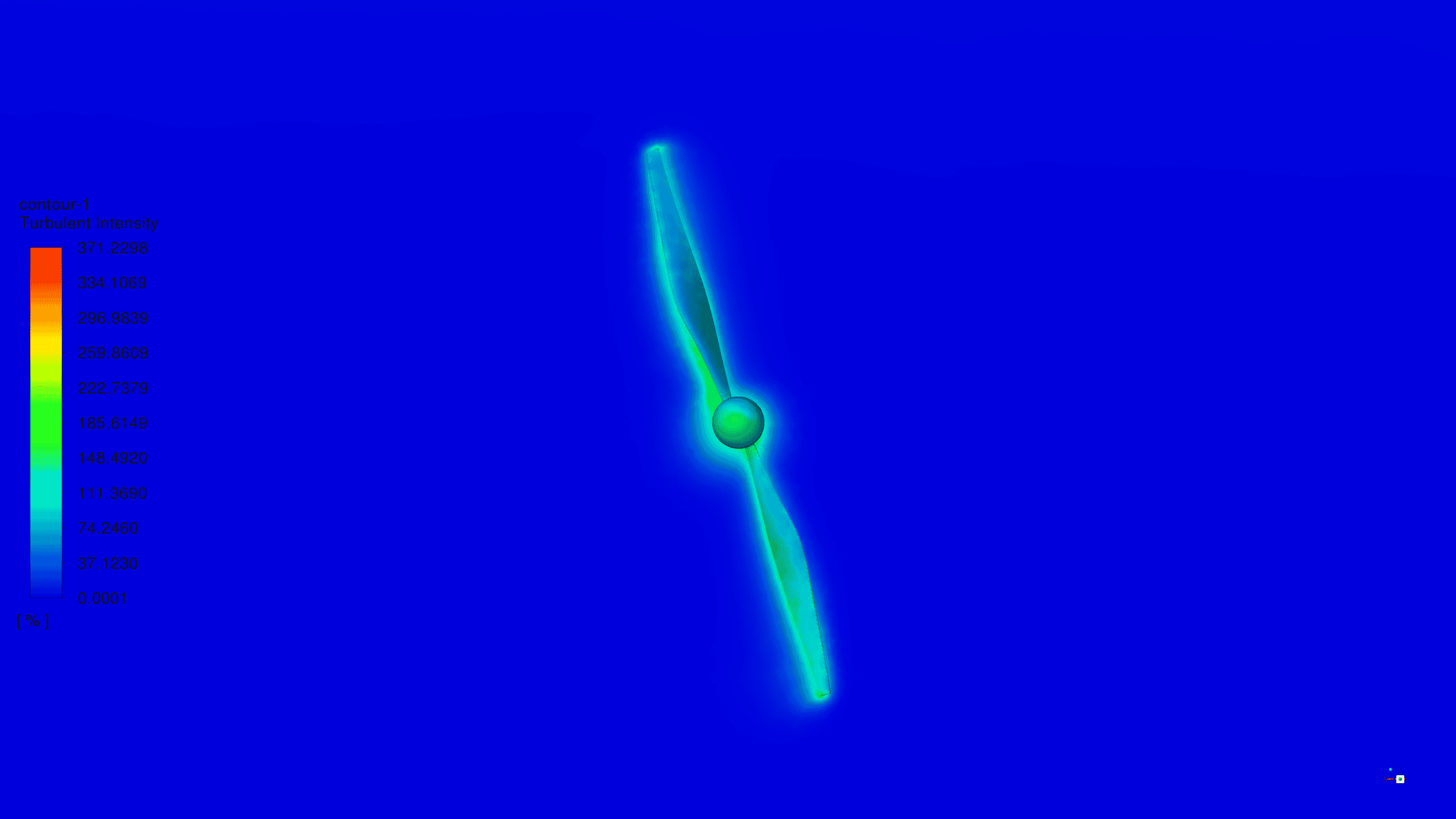
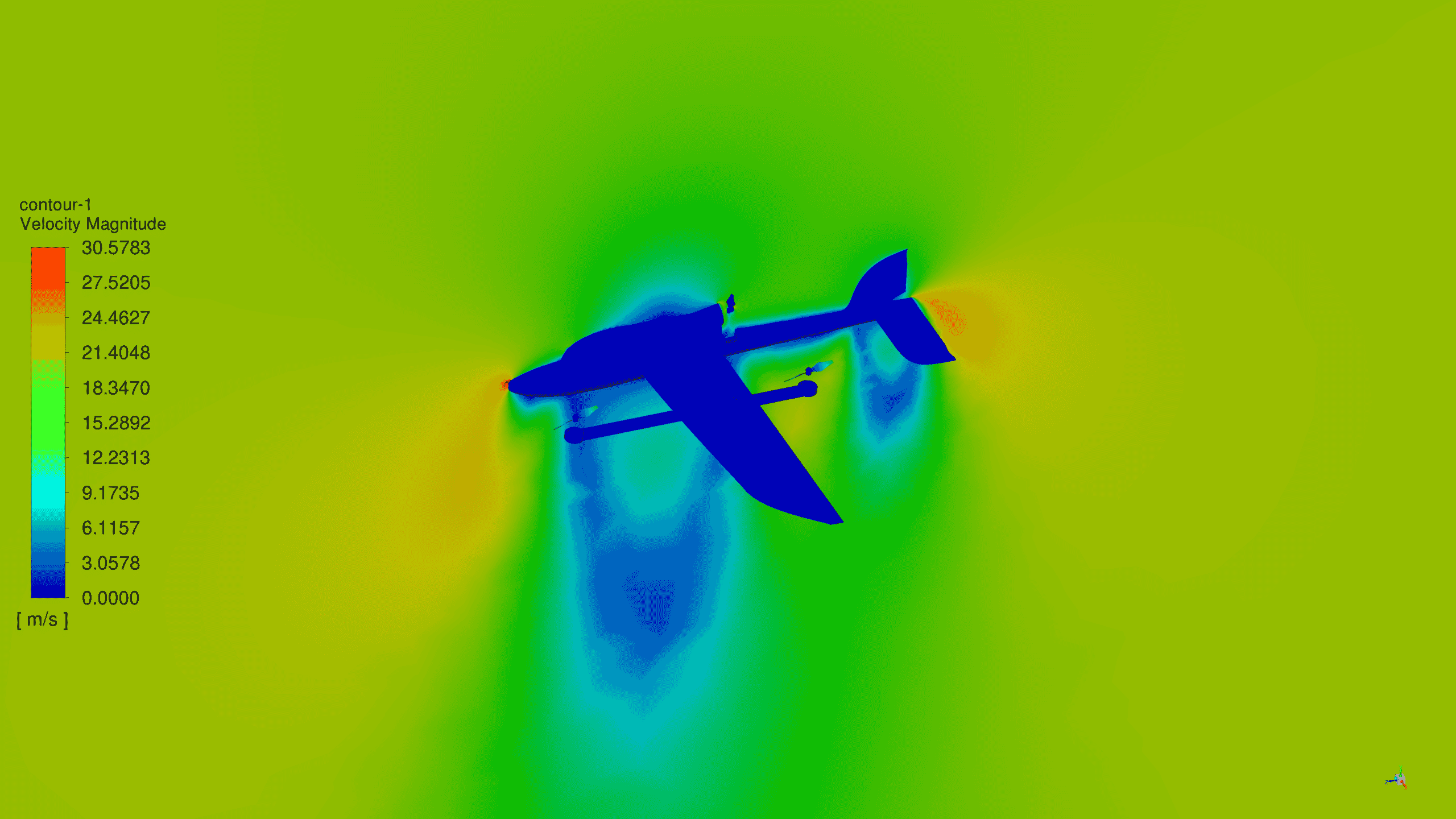
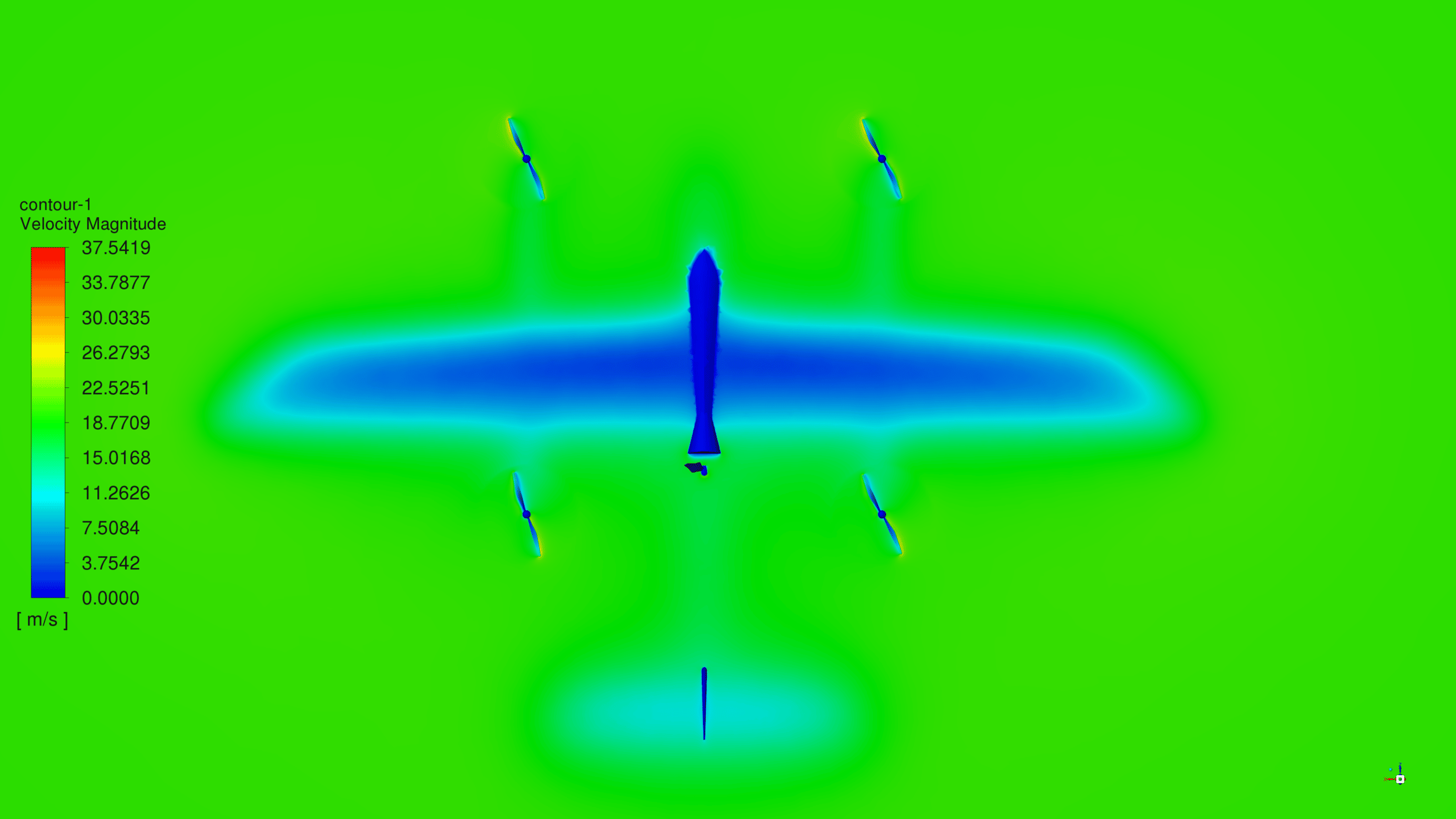

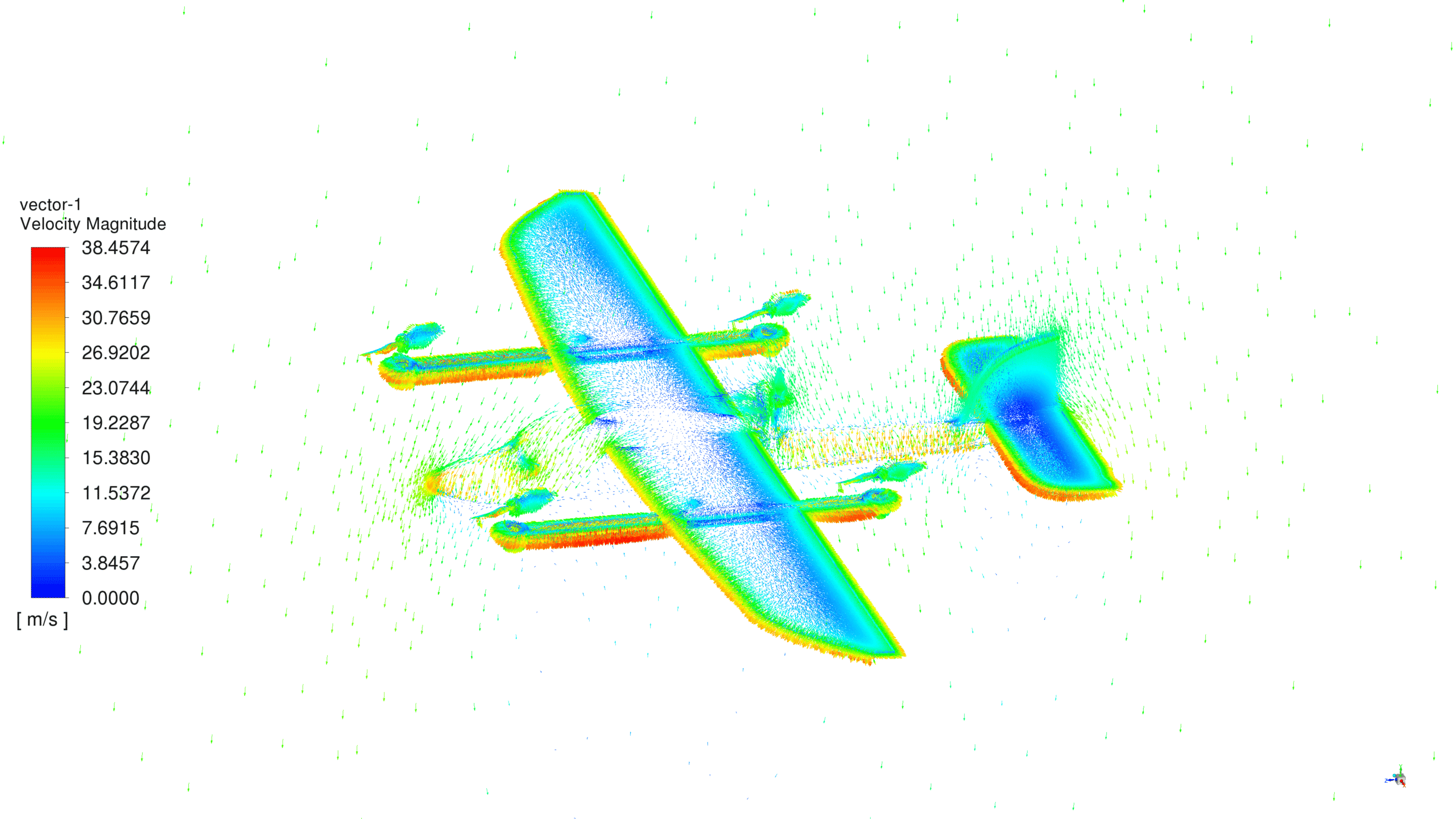

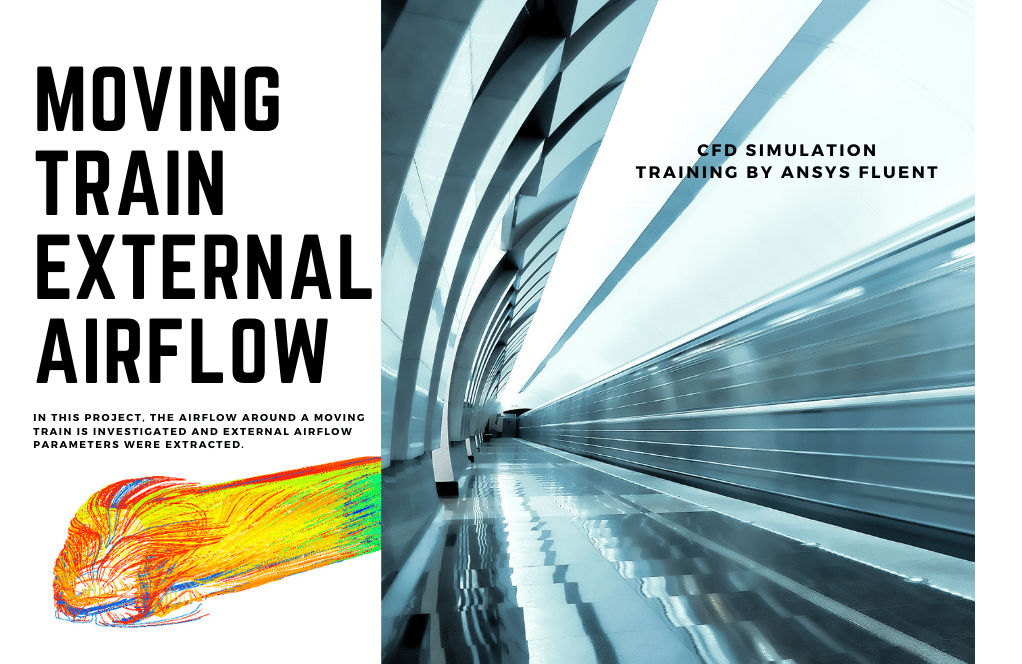
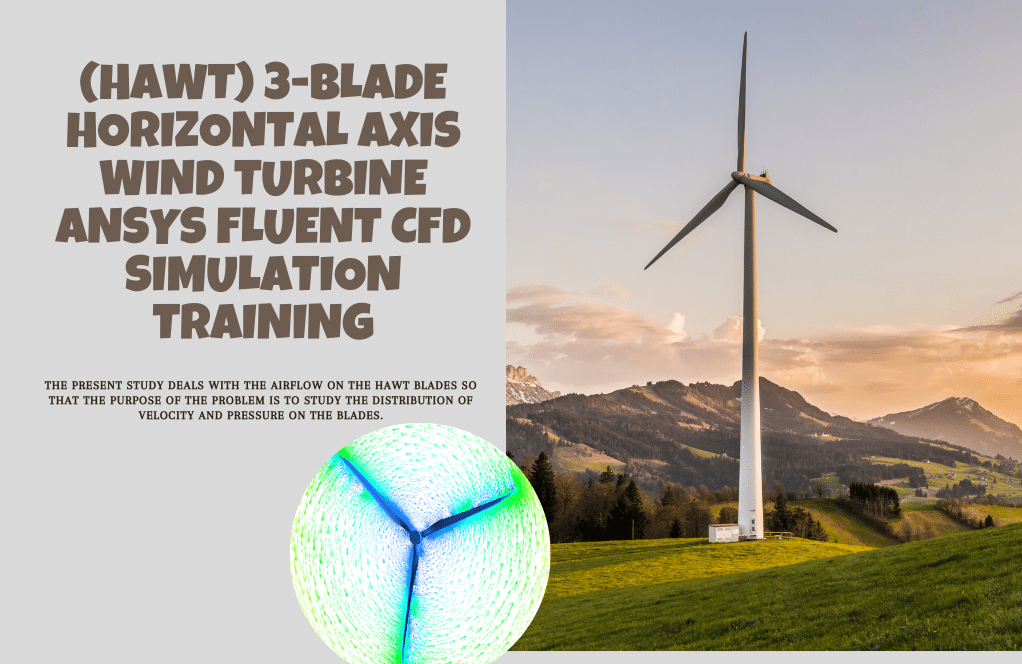
Clovis Schmidt –
I’m impressed with the level of detail in the VTOL Drone simulation. The use of MRF for the propellers and the clear representation of pressure changes is great. The simulation definitely seems to provide valuable insights for UAV design and operation.
MR CFD Support –
Thank you for your positive feedback! We’re glad to hear that the simulation was detailed and helpful for understanding UAV aerodynamics. Should you have any further questions or need assistance, feel free to reach out to us.
Moshe Sanford –
I recently completed the VTOL Drone CFD Simulation training with ANSYS Fluent. Just remarkable! The level of detail in UAV behavior analysis during the different flight phases took my understanding to a whole new level. The training was comprehensive, the steps were clear, and the results were highly accurate. It directly contributed to better quality in my drone design projects. Thank you, MR CFD!
MR CFD Support –
Thank you for the glowing review! We’re thrilled to hear that the VTOL Drone CFD Simulation training was insightful and helped you in your drone design endeavours. Your success is our top priority, and we appreciate you acknowledging the quality and impact of our course. If there’s anything else we can help you with in advancing your CFD skills, don’t hesitate to reach out. Happy designing!
Darren Hintz –
I truly enjoyed the VTOL Drone CFD Simulation from MR CFD. The detailed analysis helped me understand the challenges in UAV design, especially in the aerodynamics involved with VTOL systems. This training provided a clear picture of how different forces interact with the UAV, and the use of MRF for the propellers’ motion was particularly enlightening. It’s great to see how the simulation captures the pressure distribution, which is crucial for the structural integrity of the UAV, especially around the propellers. Thank you for such a comprehensive training package!
MR CFD Support –
Thank you for your positive feedback! We’re delighted to hear that the VTOL Drone CFD Simulation training was helpful and informative for you. If you have any further questions or need additional support, please do not hesitate to reach out. We’re happy to assist you with your journey in CFD and UAV aerodynamics!
Dr. Dedrick Mosciski –
This training was very helpful in understanding UAV aerodynamics. The simulation results made it clear where VTOL drones experience the most pressure and why this is important for their design. Fantastic work!
MR CFD Support –
Thank you so much for your kind words! We’re thrilled to hear that our training on VTOL Drone CFD Simulation was informative and beneficial in grasping the essentials of UAV aerodynamics. Your appreciation means a lot to us, and it motivates us to continue providing high-quality learning materials. If you have any more feedback or need further assistance, just let us know!
Prof. Harvey Sporer –
I’m very impressed with the detailed presentation of the CFD simulation on the VTOL Drone using ANSYS Fluent. The outcome showing the variation in velocity and pressure around the drone provides valuable insights.
MR CFD Support –
Thank you for your kind words! We are delighted to hear that you found the VTOL Drone CFD Simulation details informative and helpful. It’s great to know the insights from the simulation outcomes were valuable to you.
Ms. Felicity Welch –
Your VTOL Drone CFD Simulation product provided clear insight into the effects of pressure distribution and helped me better understand the aerodynamics of UAVs. Great work on demonstrating the use of MRF and interpreting the results!
MR CFD Support –
Thank you so much for your kind words! We are thrilled to hear that our VTOL Drone CFD Simulation training has enhanced your understanding of UAV aerodynamics and the application of ANSYS Fluent. We appreciate your feedback and are glad you found the results and demonstrations helpful.
Shyann Ritchie –
I used your CFD Simulation for the VTOL Drone, and the results were excellent. The pressure distribution and velocity vectors helped me understand the aerodynamics involved during the UAV’s vertical flight better. Thank you for this comprehensive training module!
MR CFD Support –
Thank you for your positive feedback! We’re delighted to hear that the CFD Simulation for the VTOL Drone clarified the aerodynamics of UAV vertical flight for you. If there’s anything else we can assist you with or if you’re interested in exploring more simulations, don’t hesitate to ask. We appreciate your support!
Hertha Wyman –
I was thoroughly impressed with the VTOL Drone CFD simulation training by ANSYS Fluent. Seeing firsthand how computational fluid dynamics can be applied to design and simulate drone aerodynamics was fascinating. The contours and vectors for velocity and pressure provided informative insights, and the emphasis on the importance of the propellers’ solidity due to high-pressure regions was particularly enlightening. Learning about the application of Multiple Reference Frames (MRF) within the simulation was valuable for understanding rotating flow dynamics.
MR CFD Support –
We are thrilled to hear that our VTOL Drone CFD Simulation Training was not only informative but also engaging for you. It’s great that you could appreciate the nuanced aspects of drone aerodynamics and find value in the intricate details of the simulation. We are always happy when clients understand the crucial elements that go into UAV design, such as proper attention to the propellers. Thank you for taking the time to provide your feedback and for choosing our training module!
Melba Gibson –
I’m delighted with the VTOL drone CFD simulation course! The detailed explanation of the use of MRF for the propellers was especially useful, and the results discussion was thorough. It really clarified how the velocity and pressure fields interact with the drone’s structure.
MR CFD Support –
Thank you for your positive feedback! We are thrilled to hear that our VTOL drone CFD simulation course met your expectations and provided you with valuable insights into the aerodynamics of UAVs. If you have any more questions or need further assistance, feel free to reach out!
Prof. Trever Feil –
I’m blown away by the detail in the velocity and pressure contour simulations for the VTOL UAV. It demonstrates the superior airflow dynamics modeling which could be critical in optimizing design. Fantastic work!
MR CFD Support –
Thank you for your positive feedback! We’re thrilled to hear that our simulations achieved the level of detail and accuracy you were looking for. Your satisfaction is our top priority, and it’s great to know that our work is helping in the design optimization process. Should you need further assistance or have more queries, feel free to reach out!
Prof. Darian Medhurst IV –
This VTOL drone simulation course sounds highly informative. I’d like to know if the training also covers guidelines for interpreting and analyzing the simulation results, beyond the basic velocity and pressure contours?
MR CFD Support –
Yes, the VTOL drone simulation training includes comprehensive tutorials on interpreting and analyzing the simulation results. You’ll learn how to examine different parameters, understand the dynamics of the fluid interactions with the UAV, and draw meaningful conclusions for design and performance enhancements.
Linnie Larson –
I’m truly impressed by the detail in the simulation for airflow around the VTOL UAV and the effects on the propellers. The information provided shows a comprehensive understanding of aerodynamic challenges. Great job!
MR CFD Support –
Thank you for your kind words! We’re delighted to hear that you found the simulation details and results for the VTOL Drone CFD analysis helpful and informative. It’s our goal to deliver thorough and practical CFD training. If you need further information about our simulations, please do not hesitate to reach out.